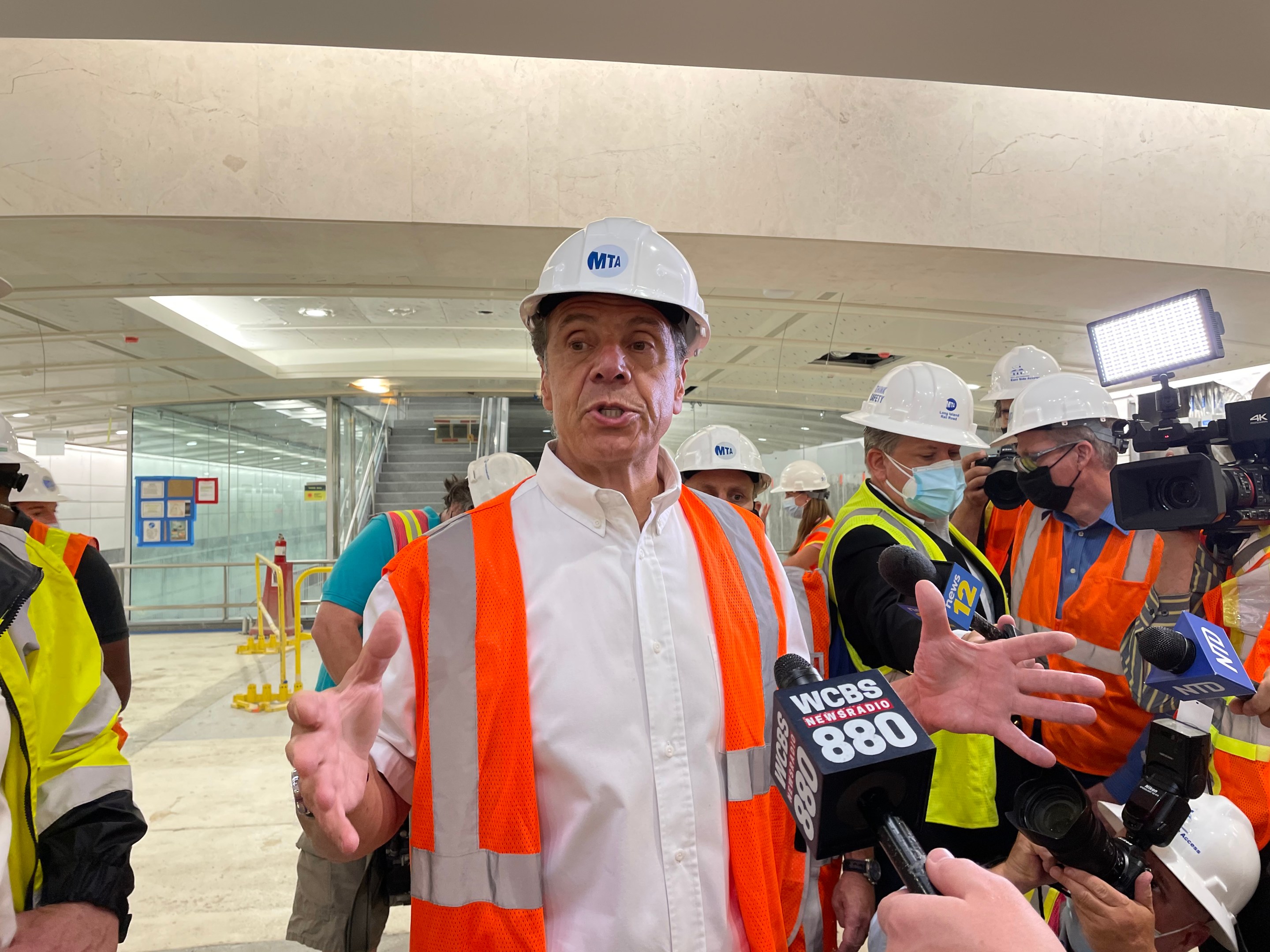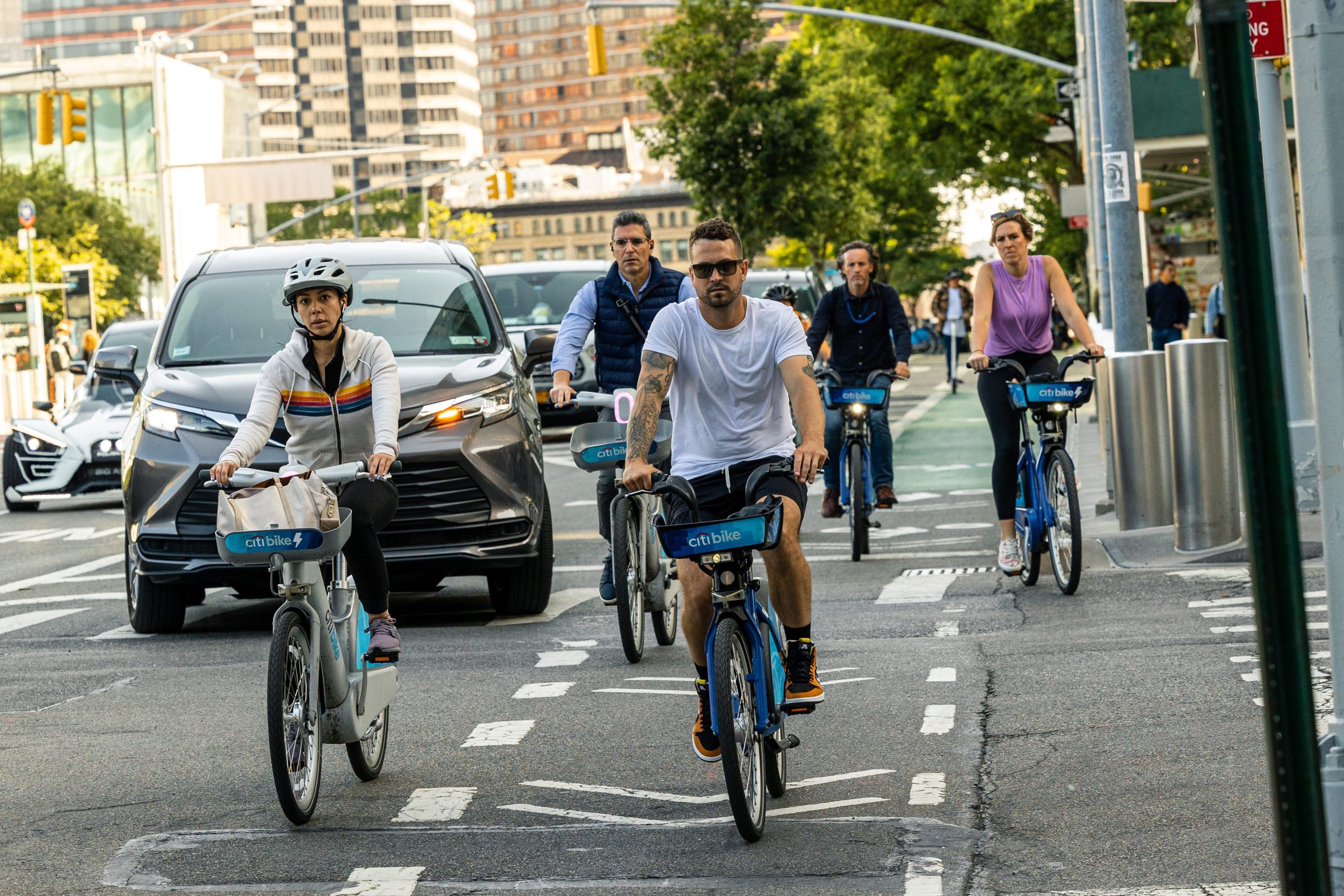
Andrew Cuomo’s reign over New York State is over. Call it whatever kind of reign you want — a reign of terror, a reign of narcissism, a reign of exhaustion — but one thing that is not over is the MTA’s struggle to emerge out of the pandemic, bleeding talent and with yet another round of interim leaders. Gov. Hochul’s first priority must be to sort out the mess.
But before doing so, she should assess Cuomo's transportation legacy and the effect he had on New York City. Cuomo spent years talking about infrastructure in New York. He clearly viewed it as a way to show how Government with a strong executive leader can Get Things Done, and he was nothing if not a strong executive. He fancied himself a modern-day Robert Moses, warts and all, but came across more as Bad Robert Moses, the one who refused to listen to experts or dissent and did only what he wanted. We needed the Good Robert Moses.
As Cuomo took a more vested interest in transportation policy in his later years, it was impossible to divorce the personality of Andrew Cuomo from the politics and the policy. What Andrew Cuomo wanted Andrew Cuomo got, and he couldn’t withstand any challengers to his iron rule. If you worked for Cuomo, you had to make him look good, and if you highlighted flaws in past approaches and tried to fix them, that made Andrew Cuomo look bad and you became a political liability. Leaders were dismissed; agencies and environmental impact studies manipulated to deliver on Cuomo’s desired proposals. He was in charge, and his voice was the first and only one that counted. This quasi-dictatorial approach may not be inherently bad unless Cuomo’s ideas were bad. So were they?
In a NY1 news piece assessing Cuomo’s infrastructure legacy, Mitchell Moss of NYU showered praise on the outgoing governor: “There hasn’t been a governor who has done as much to improve, modernize and strengthen the state in probably 50 to 80 years. He took on jobs that had been ignored.”
Moss meant this as praise, but it’s damning praise at best. Cuomo is able to say he did the most because his predecessors all did so little. Certainly, it is true that LaGuardia Airport is nicer now than it was 10 years ago, but a better airport simply helps a small number of people exiting and entering New York City have a more pleasant experience. It does nothing for Cuomo’s constituents waiting for a bus that crawls through clogged city streets or a subway that hasn’t grown much since the 1930s.

And airports are easy. Cuomo exploited his ability to direct airport money back into airports to act like Robert Moses. He didn’t have to wage a political fight for limited transit funding or swat down NIMBY concerns over lengthy construction timelines. He simply reinvested money that could be used only for airports back into those airports. It was a political coup, and when faced with tougher transportation decisions — as with the Willets Point AirTrain — he backed options that will save no one any time rather than improving transit through underserved areas because the political fight would have been tougher. Is that leadership or cowardice?
So sure, Cuomo deserves credit for forging ahead on LaGuardia Airport, but when you look at the AirTrain path — and the political pressure, if not corruption applied during the EIS process — it’s hard not to be disappointed. That doesn’t even begin to grapple with the question of whether we should be promoting air travel at the time of climate change or whether keeping LaGuardia open in the first place was even a good idea. New York City has a nicer airport, one that isn’t the laughingstock of the country, and that’s probably the best thing one can say about Cuomo’s transportation legacy.
Outside of the airports, I view Cuomo’s infrastructure and transportation legacy through five other lenses. It’s hard not to start with Andy Byford and the subways, but to understand that dynamic, it’s best to start with the Second Avenue Subway. Launched in earnest during the Pataki Administration and commenced during the early days of the Spitzer Administration, Andrew Cuomo had the good fortune of being in office when construction wrapped. He didn’t have to do the heavy lifting on the planning or on the funding to earn credit for opening the subway. He just had to show up for his own New Years Eve party.
But the Second Avenue Subway was a Cuomo speciality and a Cuomo mess all rolled into one. Until it became clear that the MTA was not going to finish the Upper East Side subway extension without heavy-handed political intervention, Cuomo seemed disinterested in MTA politics. He never rode the subways before the extension had opened and hardly did afterwards, using it as a bogeyman and a punching bag instead. For its part, in the early part of the Cuomo years, the MTA was struggling to rebuild after the damage from Superstorm Sandy, and Cuomo was very hands off for better or worse. With the MTA blowing deadline after deadline and construction stretching into the infinite future, Cuomo slowly realized he had a transportation policy nightmare on his hands, and he had to step in heavy and hard.
As meticulously detailed in Philip Plotch’s book "The Last Subway," Cuomo made the MTA “finish” the Second Avenue Subway by Dec. 31, 2016, no matter the cost — and the costs were high. Using the leadership style we’ve come to know lately — yell loudly and demand the world — Cuomo forced the MTA to divert operations resources to the Second Avenue Subway construction effort, and subway reliability tanked. The governor enjoyed his champagne toast — "EXCELSIOR" screamed the new subway station — but the schlubs of New York City had to deal with signal malfunctions and subway delays exacerbated by the governor, the very man in charge of making sure the subway was supposed to run.
The collapse of subway service due to Cuomo’s machinations under Second Avenue led Albany to look to Toronto for a new leader. Enter Andy Byford. This saga we know through and through. Byford was the most respected and most competent leader to guide New York City Transit in a generation. Importantly, he knew how to recognize talent within the bureaucracy and get the most out of people he worked with. He also didn’t need Cuomo’s patronage, and after two years, the relationship between the two men soured. Cuomo couldn’t stomach Byford getting praised in a William Finnegan article in The New Yorker. For his part, Cuomo tried to minimize Byford by stacking senior management above him with yes men, refusing to elevate Byford within the MTA, and pursuing an MTA reorganization plan with the main goal of sidelining the New York City Transit president.
In the end, it became personal. When Byford quit for good in January, 2020, he blamed Cuomo in an interview with Marcia Kramer that had the misfortunate of airing a few days before the pandemic settled in. Cuomo tried to co-opt Byford’s Fast Forward plan, but he wasn’t fooling MTA watchers. Cuomo ultimately could not let the experts he picked solve the problems he caused. It’s a legacy New York City will be trying to escape for years, if not decades.
And what of everything else? What of congestion pricing? Moynihan Station? The Gateway Tunnel? Penn Station South? How do we apportion credit for things that haven’t happened and may not?
Congestion pricing is the perfect Cuomo project. He came to it with his back to the wall and the MTA’s needs evident. He never really understood how congestion itself is a major problem for New York City and viewed it only as a revenue generator for transit. But as he leaves office, we still don’t have congestion pricing, and the MTA — Cuomo’s MTA — says we’ll be waiting two more years before implementation is complete (if at all). Ultimately, Cuomo was content to take credit for passing congestion pricing while the U.S. DOT under President Trump stonewalled it. Now, he never has to deal with the tougher politics of implementation. It’s the perfect Cuomo “accomplishment.”
Moynihan Station, Gateway and Penn South all fall into this same political morass. We have a nicer station for Amtrak now, but that’s all we have. Cuomo spent 10 years not addressing the trans-Hudson capacity problems, and despite agreeing to fund Gateway during the end of the Obama administration and subsequently complaining about Trump’s stonewalling of the project, Cuomo recently started throwing a whole bunch of cold water onto the Gateway Tunnel itself, to much confusion about the city’s transportation experts. I don’t even really know how to make sense of this. Cuomo spoke a lot about Gateway, did nothing to advance, and then, when given an opening to start the project, seemed to want to stop it. He didn’t think of first; it wasn’t going to open any time sooner; and ultimately, it didn’t suit his needs. This is the personality from which it is impossible to divorce policy or accomplishments.
I know I’m forgetting projects that fell by the wayside. I haven’t talked about the $106 million LED lights for NYC bridges that remain in a storage locker; the Kosciuszko Bridge rebuild that ignored concepts of induced demand (let alone climate change); the $30 million Cuomo demanded be spent on blue and yellow tiles for the Battery Tunnel. It all just bleeds together in the end, a tortured legacy of doing things that don’t matter without improving anyone’s commute. Is your commute better today than it was in 2009?
Is anyone’s commute better besides those who take the new Tappan Zee Bridge, the one monument to Cuomo in New York that still bears the family name for now? On one level, replacing the old bridge had to happen before it collapsed, but on the other, it’s a sprawl-inducing, car monstrosity without promised transit provisioning that was plagued by its own construction scandals. It looked good, and Cuomo had a chance to drive his mom across the new span as it opened. A flashy new span for cars without substance was ultimately what it was all about. If that’s the best we can say about the governor credited as doing the most in five or eight decades, what kind of legacy is that anyway?
And which Robert Moses was he exactly — the one everyone praised or the one everyone ultimately just wanted to see leave?






